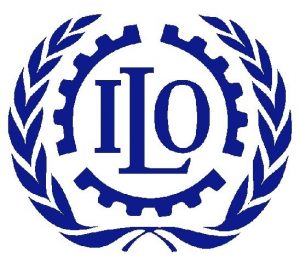Introduction
As a custodian agency, the ILO reports to the UN data for 14 SDG indicators, grouped under 5 of the 17 Goals. The statistical indicators are presented in the ILOSDG database. These figures may differ from those in the UN SDG Global Indicators Database. Data are reported to the UN annually whereas the ILOSDG database in ILOSTAT is updated more regularly. Moreover, the selection criteria for submission to the UN is stricter, thus the ILOSDG database will include more records.
Tier classification criteria
- Tier 1: Indicator is conceptually clear, has an internationally established methodology and standards are available, and data are regularly produced by countries for at least 50 per cent of countries and of the population in every region where the indicator is relevant.
- Tier 2: Indicator is conceptually clear, has an internationally established methodology and standards are available, but data are not regularly produced by countries.
- Tier 3: No internationally established methodology or standards are yet available for the indicator, but methodology/standards are being (or will be) developed or tested. (As of the 51st session of the UN Statistical Commission, the global indicator framework does not contain any Tier III indicators)
All indicators are equally important, and the establishment of the tier system is intended solely to assist in the development of global implementation strategies. For tier I and II indicators, the availability of data at the national level may not necessarily align with the global tier classification and countries can create their own tier classification for implementation.
Metadata by indicator
The following are links to the UN E-Handbook on Sustainable Development Goals Indicators’ pages for which indicators are in ILOSTAT, which reflect the latest metadata provided to the UN. They include concepts, definitions, data sources, methods of computation, limitations, and further references.
Indicator 5.5.2: Proportion of women in managerial positions
Indicator 8.2.1: Annual growth rate of real GDP per employed person
Indicator 8.3.1: Proportion of informal employment in total employment, by sector and sex
Indicator 8.5.2: Unemployment rate, by sex, age and persons with disabilities
Indicator 8.6.1: Proportion of youth (aged 15-24 years) not in education, employment or training
Indicator 10.4.1: Labour share of GDP
Additional information is also available on ILOSTAT for the labour rights indicator:
Publications
Note: Many publications are available only in English. If available in other languages, a new page will open displaying these options.

Resolution concerning the methodology of the SDG indicator 8.8.2 on labour rights (including amendments)
Adopted by the 20th ICLS (2018), this resolution sets an internationally agreed methodology to measure indicator SDG 8.8.2 on labour rights consistent with the Resolution adopted by the United Nations General Assembly on Work of the Statistical Commission pertaining to the 2030 Agenda for Sustainable Development (A/RES/71/313), Annex taken on 6 July 2017.

Decent Work and the Sustainable Development Goals: A Guidebook on SDG Labour Market Indicators
This Guidebook provides a detailed overview of the labour market indicators included in the Sustainable Development Goals Global Indicator Framework. It is intended to serve as a manual of best practices for calculating and interpreting the SDG labour market indicators, with a view to monitoring progress made at the national and international levels towards the achievement of the SDGs.

